The key to producing a winning performance from your horses is ensuring they have a happy, healthy gut. Everything that goes into their mouths can have an impact on their overall performance, from failing to give them enough energy or creating too much fizz that can cause behavioural and digestive issues.
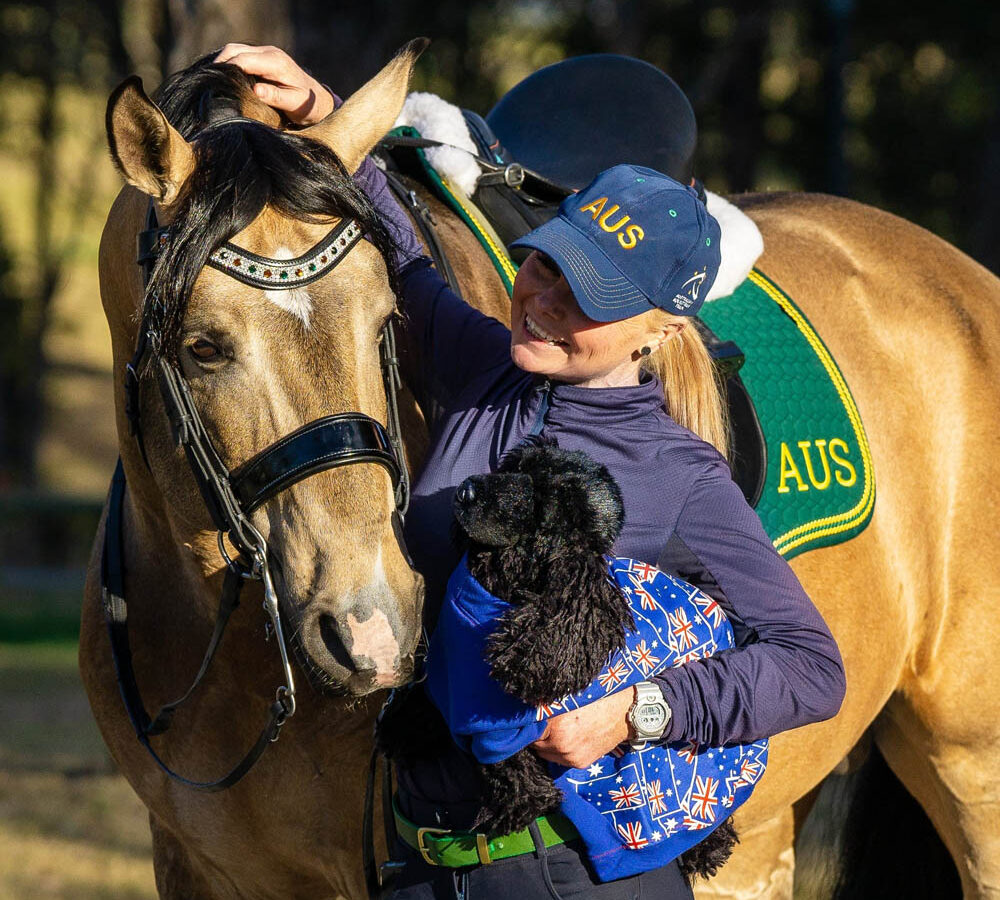
One of the most common causes of an unsettled gut is excessive levels of starch in your horse’s diet. These high levels of starch can create gas and lactic acid within the hindgut, upsetting the delicate balance and potentially causing problems such as colic and creating overall poor gut health.
From producing high-quality performance horses at her Andalusian and Lusitano stud and travelling the world to compete, Tokyo Paralympian and Hygain sponsored rider Victoria Davies knows all too well the importance of equine gut health. In fact, you could say she has a good gut feeling for knowing how to get the very best out of her horses because it’s in her blood.
“I was born with a passion for horses running through my veins,” says Victoria. “Growing up, I was fortunate enough to be surrounded by many beautiful horses, as my parents were heavily involved in breeding and competing horses, and owned one of the first imported Spanish PRE stallions to come into Australia.” This family background in horses and a childhood of Pony Club and showing provided Victoria with a springboard to becoming a Paralympian in Tokyo, and she is currently ranked 7th in the FEI Para Equestrian World Rankings.
ROCKY ROAD TO THE TOP
Victoria and her stunning buckskin Lusitano stallion, Celere, represented Australia in Tokyo in the Grade II class. The achievement is a credit to the incredible resilience shown by Victoria for never letting physical health limitations prevent her from chasing her dreams. When she was just nine years old, Victoria was diagnosed with the degenerative disease Rheumatoid Arthritis. “In my early teens, I became too weak to ride and was confined to crutches and a wheelchair,” she explains. “It wasn’t until I was 19 and after two hip replacements that I was able to ride again, and I haven’t looked back. Not long after that, the Australian national coach at the time contacted me as they believed I had talent and they invited me to attend a High Performance squad camp in Canberra. I didn’t even know Para Equestrian existed and I remember being in awe of the other para riders and their fierce determination training for the upcoming Paralympics. From that moment I knew I wanted to be like them!”
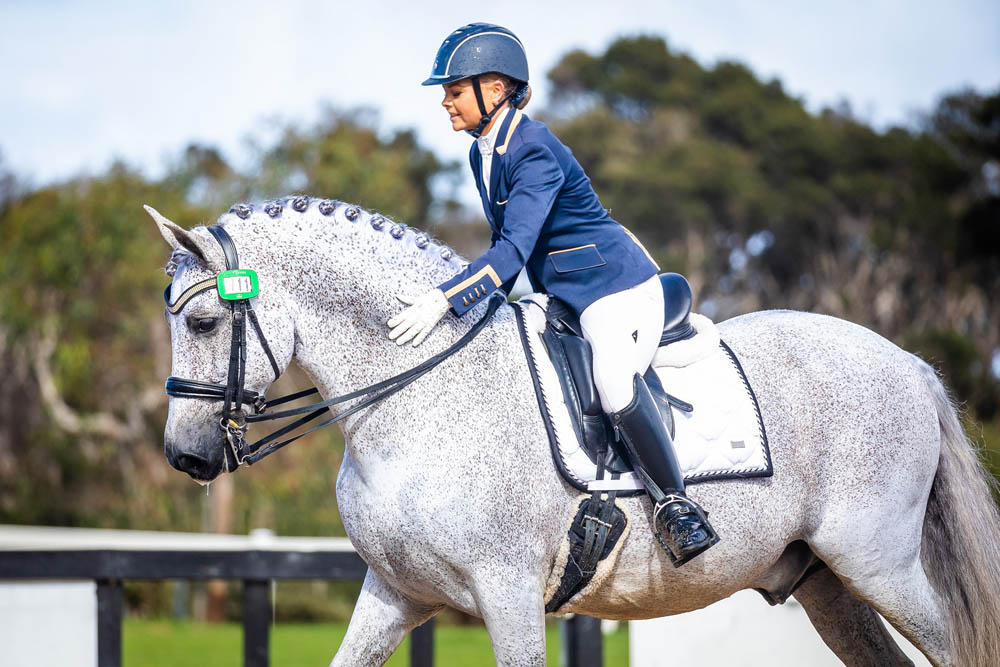
But the path to the Paralympics and fulfilling her dream of continuing to work with horses has been full of obstacles. In 2016, Victoria was also diagnosed with a serious neck condition called Basilar Invagination, resulting from her Rheumatoid Arthritis. “My neck had collapsed, pushing my spine into the base of my skull,” explains Victoria. “This causes pinching and pressing on the brain stem and nerves that connects the brain to the spinal cord. This was diagnosed one week out from the 2016 Paralympic European qualifiers, which I was forced to withdraw from. Over the years the destruction to my body has been severe and has resulted in over 42 operations, multiple joint replacements, fusions, scarred organs, nerve and spinal cord damage and years of chemotherapy and aggressive immune therapy. This setback and knowing the potential risks involved if I continue to ride has not deterred me as I continue to train each day and follow my dreams of competing at the Paralympics, all supported by my neurosurgeon, of course!”
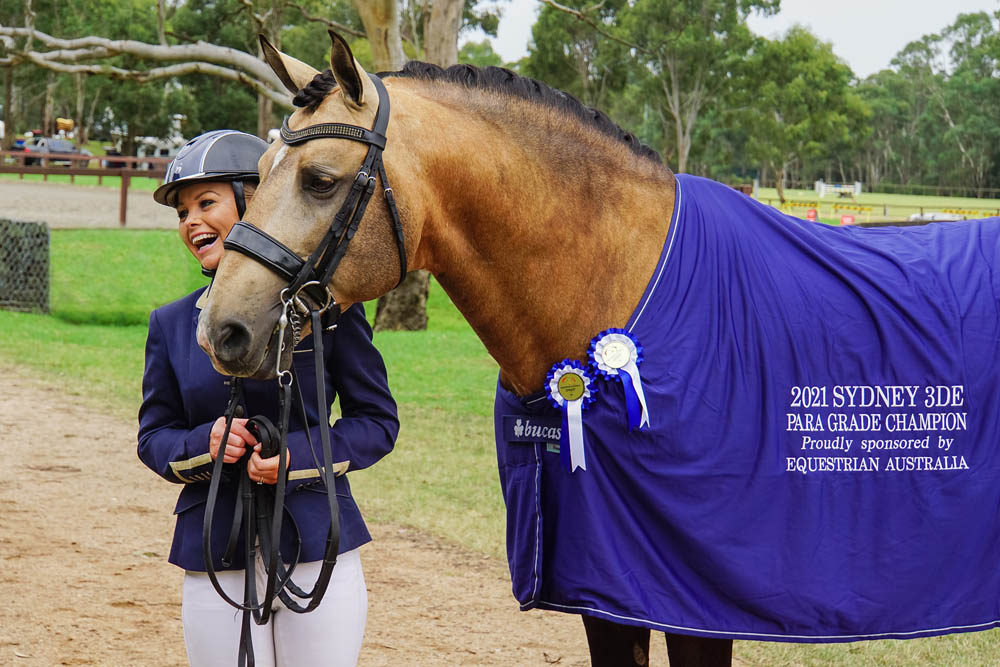
“Celere is the only Lusitano outside of
Portugal to gain this title.”
HORSES AND HOME
It’s been a lifelong love affair between Victoria and the Andalusian (PRE) and Lusitano breeds from southwestern Europe. Growing up around the breeds, Victoria quickly developed an appreciation for their beauty and uniqueness. “My husband and I run Tora V PRE & Lusitano Stud located on the South Coast of NSW,” says Victoria. “Our current breeding program is the result of careful planning, passion and over 30 years of experience with the two breeds. We have travelled the world to source mares and stallions that are not only suitable for our performance and breeding needs but we also saw a need to help grow the gene pool within Australia and we are delighted to offer three proven world-class performance stallions at public stud; Celere (IMP), Joyero JF II (IMP), and Andaluka Elegido. We have sold a number of foals, performance and breeding horses across Australia and internationally. When we were based between Australia and Europe from 2014 to 2016, a number of our Lusitano horses were sold within Portugal and Europe. All five of our broodmares as also proven performance horses, which is an important part of our breeding, to breed for performance you need proven trainability.
“After Celere stunned the world with his performance at the 2020 Tokyo Paralympic Games this year, he has since been awarded by the APSL (Lusitano Portuguese Studbook) with the prestigious title of ‘Recommended for Dressage’ and now proudly holds the four stars (****) next to his name,” explains Victoria. “Celere is the only Lusitano in Australasia to achieve this and, more impressively, the only Lusitano outside of Portugal to gain this title. To date, there are less than 50 Lusitanos worldwide that are Recommended for Dressage. Only a Lusitano that has proven themselves at the highest level in dressage can be awarded the prestigious four stars, which is a testimony to their ability and superior example of the Lusitano breed. This title is not given lightly!”

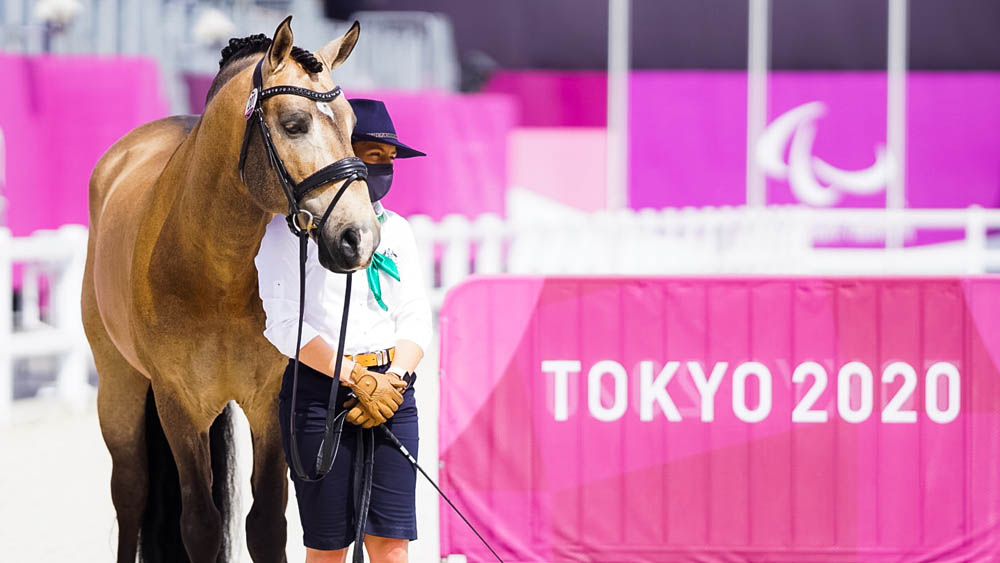
“I keep my horses
on a balanced diet.”
KEEPING A HAPPY BALANCE
With more than 30 years of experience working with horses, Victoria has had her share of challenges keeping her horses happy and sound in her travels. “My husband and I have imported and exported horses from all around the world, which has been all a positive experience for us,” says Victoria. “When travelling a horse via plane, you don’t have any control over what happens during the flight as you are not there and that’s why it’s important to trust in the professionals. From my experience, those that work in this industry only want the very best for the horses and treat them with a great deal of care no matter the worth of the horse. Mind you, I have noticed and been told everyone loves Celere when he travels so he usually gets extra attention with his charm!
“To prepare Celere for his flights this year to Tokyo and then back again to Australia we made sure his diet and supplements never changed too much. Celere had fortnightly vet checks months prior to the trip and his health was checked daily the whole time he was away. There is a lot of paperwork involved, which is very daunting. One missed signature or vaccination can lead to a horse not being able to fly on time!”
For some horses, travelling can be quite a stressful time, which can lead to digestive issues. Being in tune with your horses, knowing their behaviours, and keeping their diets consistent can make this time much easier on you and your horse. “Only hay and water are supplied on the flights, and it’s known that horses can lose weight during travel and a reason why we kept more weight on Celere as he did lose a bit of weight during the flight, but at Tokyo, he gained 40kg which helped for his flight home.
“I am very lucky that my horses don’t show signs of stress, they are all very chilled, however, I know that stress can be held internally and this is why I am a huge believer in gut health,” explains Victoria. “I keep my horses on a balanced diet, such as Hygain Balanced, that contains probiotics to support a healthy gut and immune system. I also feed daily an amazing equine digestive supplement that has a powerful prebiotic, mycotoxin binder, threonine and glutamine. A healthy and happy horse starts from the gut! I have been feeding Hygain Balanced for 11 years now on a number of different horses from Spanish PRE and Lusitano to Warmblood, all of which have been used for performance, breeding or both. Hygain Balanced is a balancer feed that is made up of low starch ingredients (canola meal, lupins) and contains only 5% starch. Having my horses on a low starch diet is important to me as my horses really don’t need non-structural carbohydrates and sugars in their diets as we live on rich ex-dairy farmland, and breeds such as PRE and Lusitanos are good doers.
“With Hygain Balanced you only have to feed a small amount and the horse will receive its full daily requirements of nutrients, vitamins and slow-release energy! I was also drawn to Hygain Balanced for its high levels of vitamin E, biotin and prebiotics. All my horses thrive on this hard feed, their coats are glossy, their hooves grow tremendously well and what is important — this does not fizz or make any of my horses hot and economically it is fantastic — a little goes a long way. Another product I introduced to all my horses’ diets two years ago has been Hygain Micrbeet, which they all absolutely love as it makes their feeds a big, yummy mash! I stopped using oaten chaff which contains sugars and replaced it with the Hygain Micrbeet, which is great for gut health, high in fibre, and low in starch, excellent for horses that may be prone to metabolic related issues.”
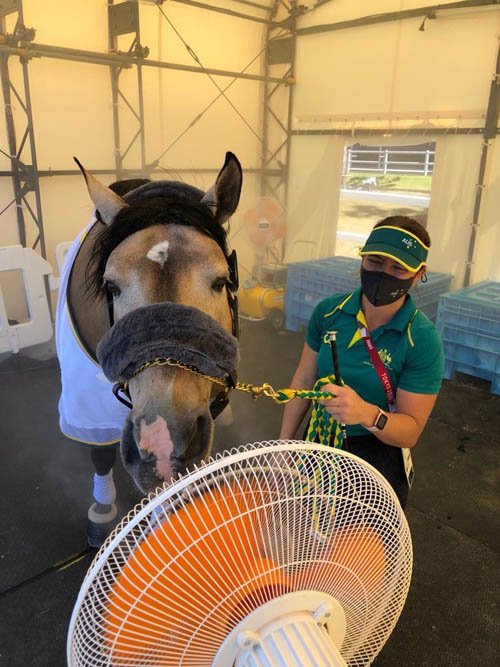
“High starch diets can
appear in many forms.”
A HAPPY GUT = A HAPPY HORSE
One of the reasons a horse’s gut may become unsettled is excessive amounts of starch in their diet. And it’s an easy mistake to make, according to Hygain Equine Nutritionist Holly Mills. “You may be feeding a higher starch feed and not even know it,” says Holly. “Most commonly this will occur in horses that are considered ‘poor doers’ as owners are looking for weight gain. Unfortunately, starch is actually quite good at helping a horse gain condition; you could think of a higher starch weight gaining feed a little like fast food for horses. Of course, there is a tipping point and, as the fast-food comparison suggests, a higher starch feed is not always the healthiest option for the equine digestive system.
“High starch diets can appear in many forms,” explains Holly. “Often horse owners will look at muesli-style feed and believe it is rocket fuel and feel safer going with a pelleted option. However, this is certainly not the case in many situations! High starch feeds can take any form – pellet, nugget, muesli, just as lower starch feeds can also take these forms. When talking about high starch there are two key things you should consider: does this feed contain a cereal grain or by-product (e.g. corn, barley, wheat) and what is the percentage of fibre within the product? Feeds that contain a major cereal component and a low fibre content are high starch/sugar feeds.
“Horses historically are wandering herbivores that grazed on a variety of pasture species. In today’s world, we confine our horses to smaller paddocks, improve pasture and provide higher energy feeds to support optimal weight and/or performance. This has increased their overall starch intake. Starch is designed to be digested in the small intestine. When we provide excess levels of starch some escapes digestion in the small intestine and ends up in the hindgut. This is what we want to avoid!”


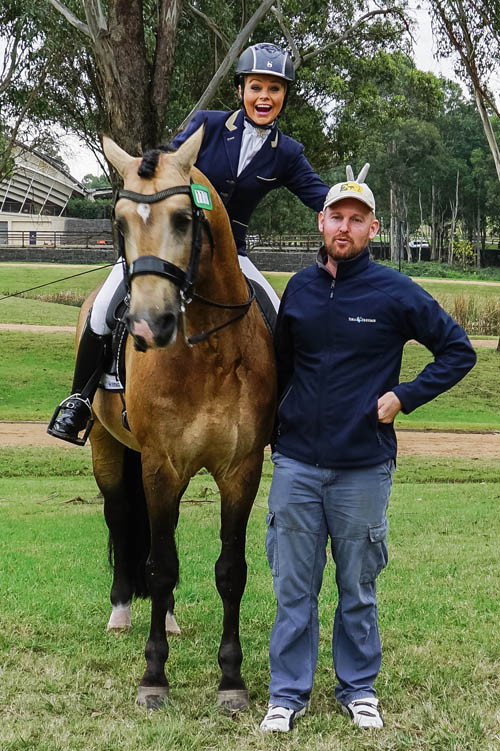
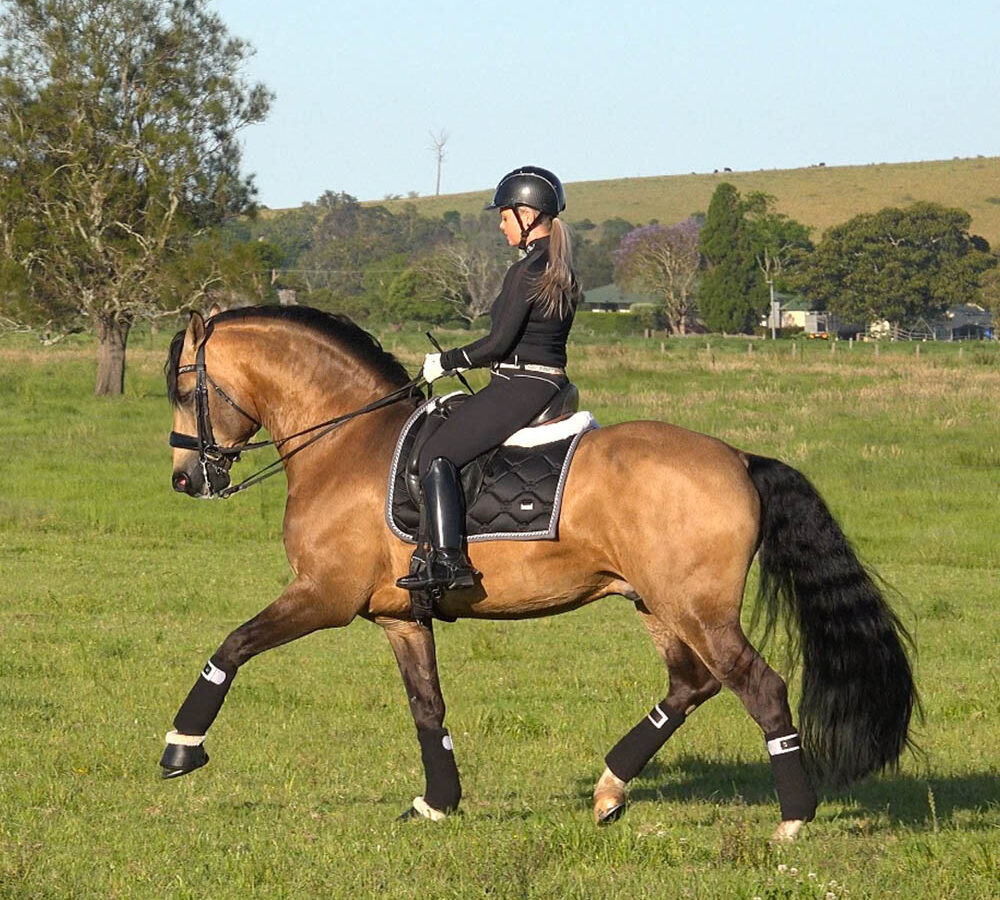
THE SCIENCE BEHIND STARCH
“In the hindgut, starch is rapidly fermented,” explains Holly. “This produces gas and lactic acid, which can upset the delicate balance within the hindgut, potentially causing colic symptoms. The hindgut hosts a whole ecosystem of living organisms that are designed to ferment roughage and produce many beneficial products for the horse. When the balance is upset some of these organisms may die. This death can release toxins that may enter the bloodstream. This has been linked with the development of laminitis. Higher levels of starch fermenters in the hindgut also mean that the hindgut will not be digesting roughage optimally. This can also affect the horse’s ability to maintain their optimum condition.
“We also need to consider horses that may be overweight, at risk of EMS and/or prone to laminitis,” continues Holly. “Higher starch feeds may also be higher in simple sugars. These feeds may cause a higher glycaemic response which then triggers an insulin response. If your horse has access to high sugar/starch feeds it may be at risk of developing insulin resistance (equine metabolic syndrome). This is very similar to Type 2 diabetes in humans and is a risk factor for developing laminitis.
It is a common belief that starch contributes to ulcer formation, however, research does not support this. Starch mainly wreaks havoc in the hindgut of the horse, not the stomach where ulceration mainly occurs.
“There is currently no strong evidence to suggest a horse that is prone to ulcers cannot manage some starch content in its feed. As long as their diet is balanced, providing sufficient roughage and the starch level is appropriate it should be okay to feed to a horse prone to ulcers.
“To avoid a high starch feed, look at the ingredients and the nutritional analysis of the feed. Search for the inclusion of cereal grains and fibre percentage. In general, anything that contains less than 10% fibre will be quite high in starch. You want to be looking for something that is less than 30% starch. You do technically need to take into account protein and fat percentage but as a general rule, aim for more than 10% fibre. Specific cereal grains that are free or low starch to look for include lupins, sunflower seeds, faba beans, canola meal, soybean meal, and lucerne meal among others.”
A GUIDE FOR STARCH LEVELS
- <10% = low starch feed. Usually suitable for laminitis prone/EMS/Cushings or hot and fizzy horses.
- 11-20% = Medium starch feed. Suitable for most horses. Generally, quite good at maintaining a horse’s condition whilst also keeping them cool.
- 20-30% = Medium-high starch feed. Suitable for horses that struggle to maintain their condition and are not prone to hot and fizzy behaviour, and horses that may need a little extra energy.
- >30% = High Starch feed. Suitable for horses that require high energy. Normally utilised for high-performance horses and racehorses. EQ
This article was written in conjunction with Hygain.
YOU MIGHT ALSO LIKE TO READ:
Gary’s Guide to Building Lean Muscle – Equestrian Life, November, 2021
In a Bind: The Role of Toxin Binders – Equestrian Life, October, 2021
Hold Your Horses: Feeding for Coolness – Equestrian Life, September, 2021
The Importance of Vitamin K – Equestrian Life, August, 2021





